Use code KEITHWEE for a 5% discount at Light Lens Lab here for a limited time. Every bit of savings counts.
Introduction
Light Lens Lab focuses on quality recreations of well-known lenses such as the Light Lens Lab 35mm ƒ2 8-elements, Cooke 50mm Speed Panchro lens (my reviews are linked). This time, they have seemingly outdone themselves with a truly mythical piece of Leica optics out of reach to most of us, the 1966 Leica Noctilux 50mm ƒ1.2 double aspherical which can be bought for around USD50,000 pre-owned.

tl:dr
Like the Leica Summicron 35mm ƒ2 8-elements, the original Leica Noctilux 50mm ƒ1.2 double aspherical is simply out of reach for most photography aficionados, making the Light Lens Lab 50mm ƒ1.2 ASPH (1966) a lens unique in its existence.
The build exceeds my expectations by a large margin, down to a full brass hood with a drop-in filter design following the original and excellent optical quality. I believe there are very few reasons not to have this lens.

To set the record straight, the Light Lens Lab 50mm F1.2 ASPH (1966) is based on the 1966 Leica Noctilux 50mm F1.2 double aspherical, not the modern 2021 Leica’s re-issue.
Technicalities
The story goes back to 2019, when Light Lens Lab was still an unknown name, decided on the aspiration to re-make three specific legendary Leica lenses, the Summicron 35mm ƒ2, the Elcan 50mm ƒ2, and the Noctilux 50mm ƒ1.2 double aspherical and I am truly happy for them when 5 years later, this came to reality.
- Leica M-mount, rangefinder-coupled
- Full brass, titanium, or aluminum body construction options
- Lanthanide-infused glass code-named 900403, which, according to Light Lens Lab was used in the 1966 Leica version.
- Focal Length: 50mm
- Double-Gauss Design, Six Elements in four groups
- MFD of 1 meter
- Half-stop aperture, manual control from ƒ1.2 to ƒ16
- 49mm filter size
- 12503 clip-on hood design with drop-in filter.
- Weight: Aluminum (450 grams), Brass (632 grams), Titanium (506 grams)
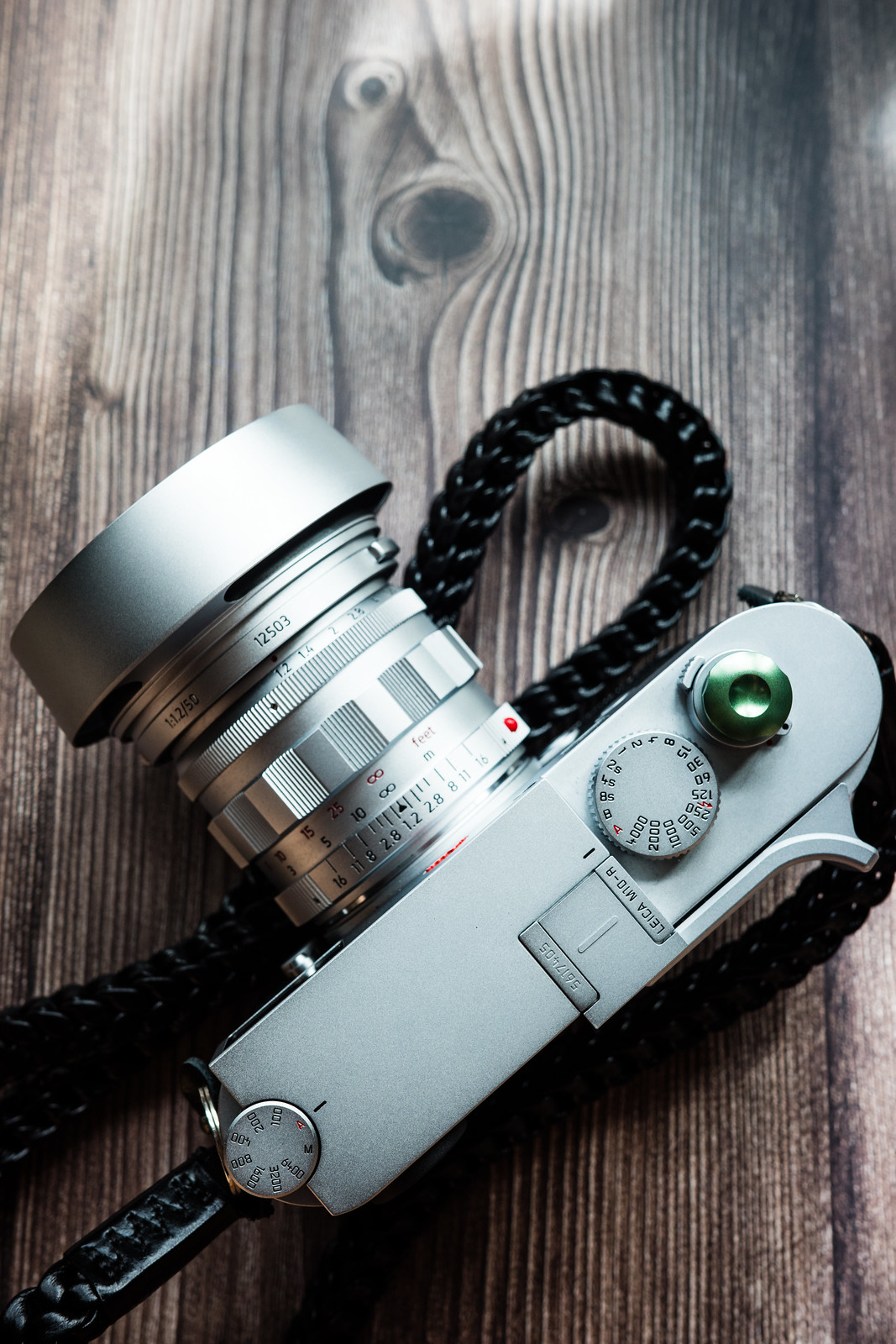
What you should know about glass and optical design
The 1966 Leica Noctilux 50mm ƒ1.2 double aspherical imaging output was remarkable for two reasons: the use of very specific glass for its elements and, more commonly known, the hand-ground aspherical elements used in Leica optics for the first time and which Light Lens Lab shared that they followed through on these in their design and production.
According to Light Lens Lab, they have reverse-engineered glass type 900403 (glass with a refractive index of 1.9005 and an Abbe Number of VD = 40.3) for this reproduction, which is supposed to be the same/similar used for the 1966 version from Leica.
(information above from Light Lens Lab’s Mr. Zhou and shared in Macfilos’s review here, this gentleman seems to have access to this lens since the very beginning)
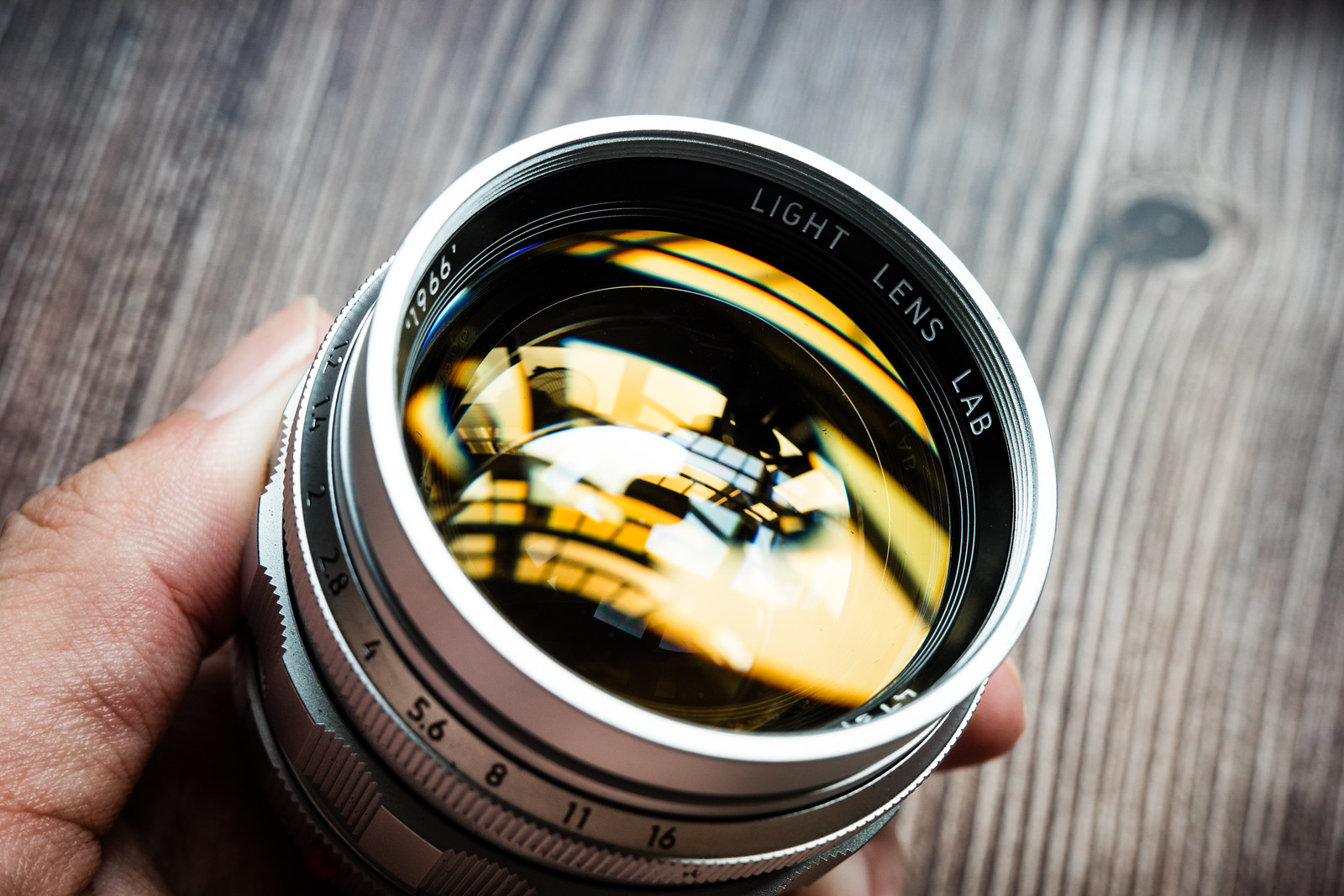
Out of the box, what impressed me were two things,
a. The immaculate build of Light Lens Lab 50mm ƒ1.2 ASPH (1966), down to the re-creation of the clip-on three-piece drop-in filter design of the original 12503 hood.
b. The chrome version’s beauty that matches the Leica M-chrome color. I did not choose the black paint version for my purchase as I currently own the Leica Noctilux 50mm ƒ1.2 (reissue) in black chrome.
There is actually a Titanium version for the Ti M-body owners, and it is not painted Titanium, but a full Titanium constructed body.
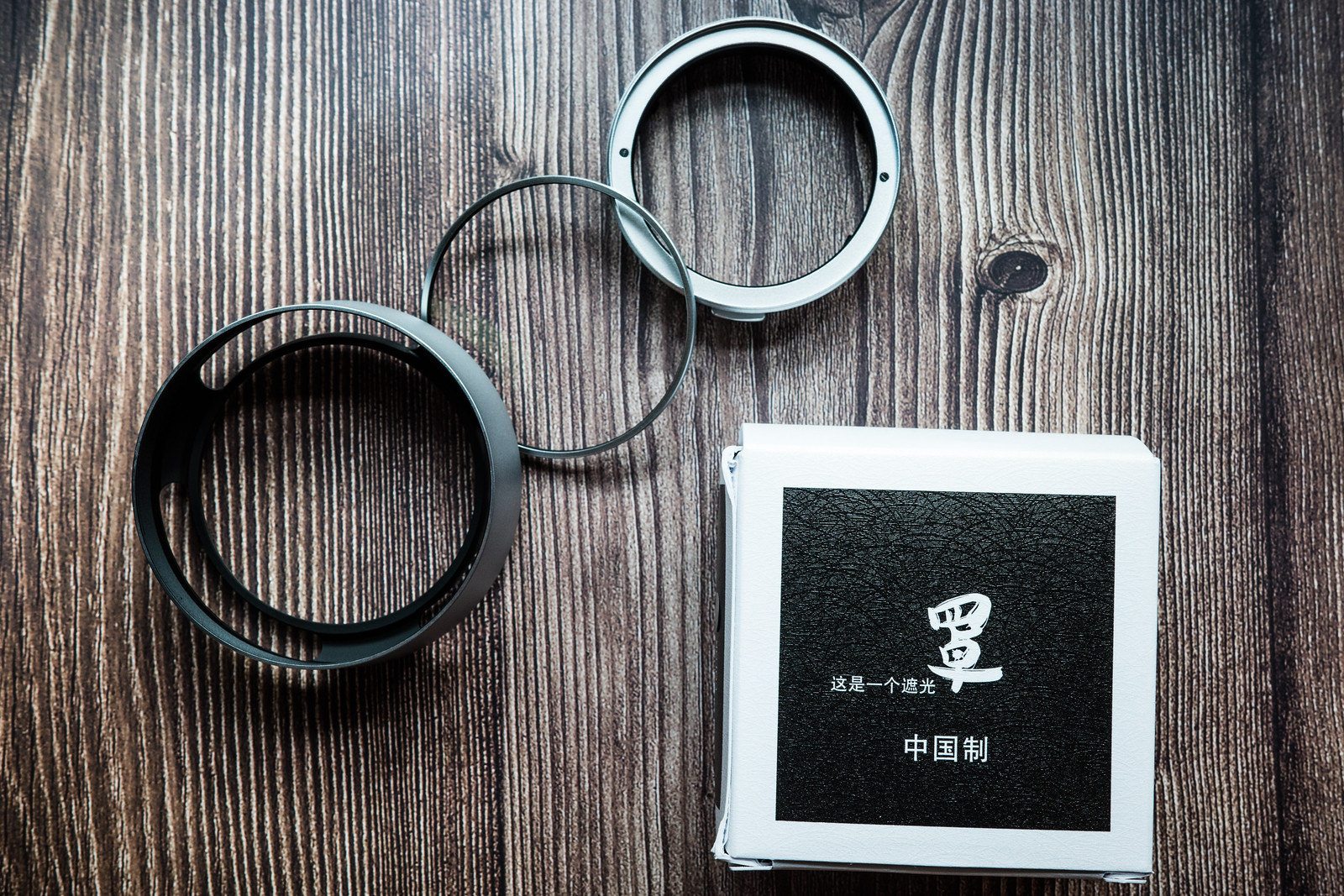
There is no focusing tab. True to the original’s design, the focusing ring has an excellent balance between resistance and smoothness, and coupled with the assuring clicks on the aperture ring, this piece of optics has been built with attention towards its handling.
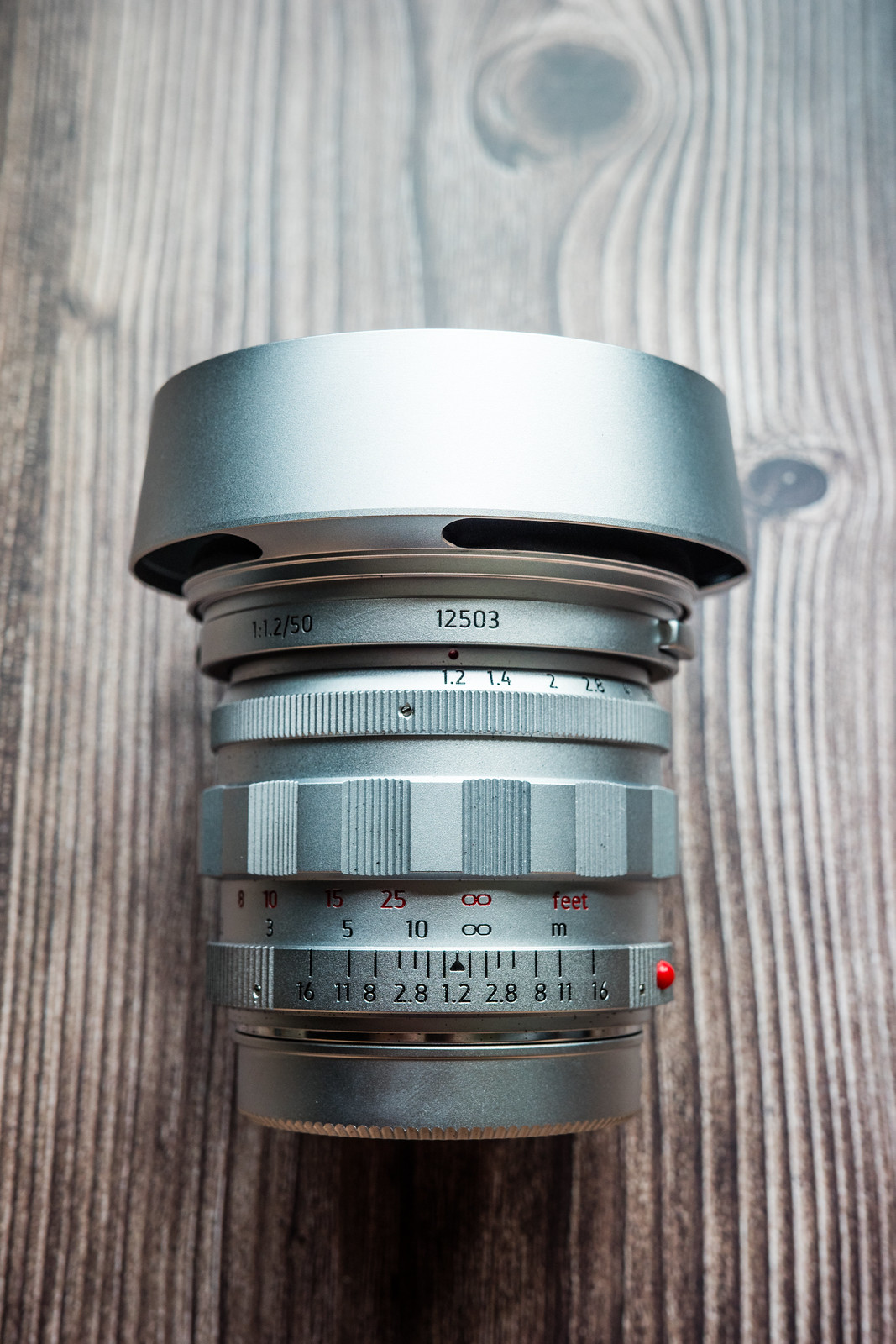
Performance
Frankly, although this is hardly my first time handling a lens from Light Lens Lab, I was concerned about the rangefinder calibration, especially for a lens with such a thin depth of field. In my first 30 minutes of testing it, I was very glad to see that the lens out of the box was indeed calibrated right to the rangefinder.
Anyone who has photographed with true vintage lenses from Leica will know that we are looking for is what some describe as a ‘sharp enough but never truly sharp‘ level of detail reproduction when using these optics wide open at maximum aperture. (the romantics call this a “dreamy look”)

These lenses were designed to be photographed wide open for one to fully appreciate their character, hence I will focus on this primarily. Any lens when stopped down sufficiently should be sharp anyway.
If not, please do yourself a favor and dump the lens.
I have not photographed using the original 1966 Leica Noctilux 50mm f1.2 double aspherical, but I own the re-issue version (my review is here).
At maximum aperture, one can obtain an acceptably good amount of detail reproduction with a satisfying Leica ‘glow’ similar to what I have observed in the Leica Noctilux 50mm ƒ1 and Leica Noctilux 50mm ƒ1.2 (re-issue). (my reviews are linked)
As expected, there is some vignetting at ƒ1.2. The ‘bokeh’ of the Light Lens Lab 50mm ƒ1.2 ASPH (1966) comes across as pleasant with a dreamy gentle fall-off from the focused subject’s edges to the background and in the right situation, has a soft swirly effect one sees in the Noctilux 50mm ƒ1.2.
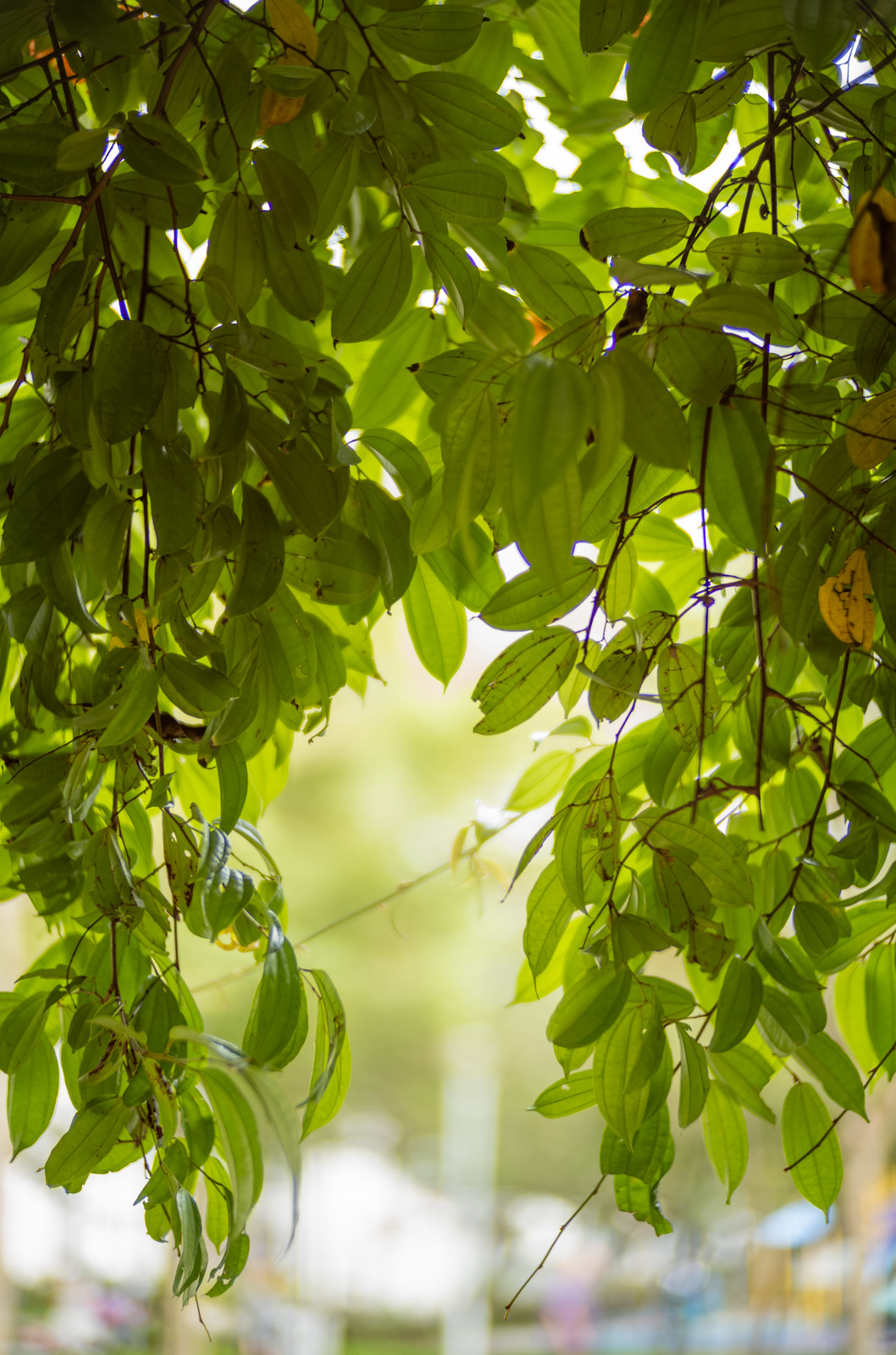
Obviously, some amounts of chromatic aberration will also be present when photographing wide open and especially into light sources for extremely fast lenses. This is not much of a concern for me, as post-processing easily resolves this.
Like the Leica Noctilux 50mm ƒ1 and the Leica Noctilux 50mm ƒ1.2 (re-issue), the Light Lens Lab 50mm ƒ1.2 ASPH (1966) is not an easy lens to master, and this is a piece of optics which one needs time and patience to work with and eke out its full potential.

I will end my first impressions review here before it becomes a full review (lol). Here’s looking forward to finding time to use the Light Lens Lab 50mm ƒ1.2 ASPH (1966) in a more proper portrait shoot and sharing more samples soon.
Thank you for reading.

Disclaimers:
- All product photos and samples here were photographed by me. I believe any reviewer with pride should produce their own product photos.
2. All images were shot with the Leica M10-R and my personal copy of the Light Lens Lab 50mm ƒ1.2 ASPH (1966)
3. This review is not sponsored. I paid for the Light Lens Lab 50mm ƒ1.2 ASPH (1966) for neutrality’s sake.
4. I write as a passion and a hobby, and I appreciate that photography brands are kind enough to respect and work with me.
5. The best way to support me is to share the review, or you can always help support me by contributing to my fees to WordPress for the domain using the Paypal button at the bottom of the page.
Use code KEITHWEE for a 5% discount at Light Lens Lab here for a limited time. Every bit of savings counts.

Hi Keith, I was looking for more information of this lens and this appeared. Thank you for this well written review.
LikeLike
Hi! Thank you for the kind words.
LikeLike
Well written review with beautiful shots! This is not a first impressions sharing as there are other self claimed full reviews with much less useful information.
LikeLike
Hi there, thank you for the kind words 🙂
LikeLike
Perfect timing, thank you. I just bought this lens, same finish, and I hope to receive it on Monday. I want to try it, and test myself, on my M3. If that fails, then my M10M.
LikeLike
Hi, looking forward to it, especially on film !
LikeLike
Nice 👌
LikeLike
Thank you 🙂
LikeLike
I enjoyed reading your review. Just curious if I can use your code to purchase any Light Lens Lab’s lens? Even if I purchase thru PopFlash.com?
LikeLike
hi good day, I think the code is only avail at Light Lens Lab direct site at https://lightlenslab.myshopify.com/ as I had requested from them a code to share for readers of the site. PopFlash wise I have no contact with them unfortunately.
LikeLike